At the moment, the Non-Commissioned Officer Corps of the Armed Forces of Ukraine — which includes more than 250,000 sergeants…
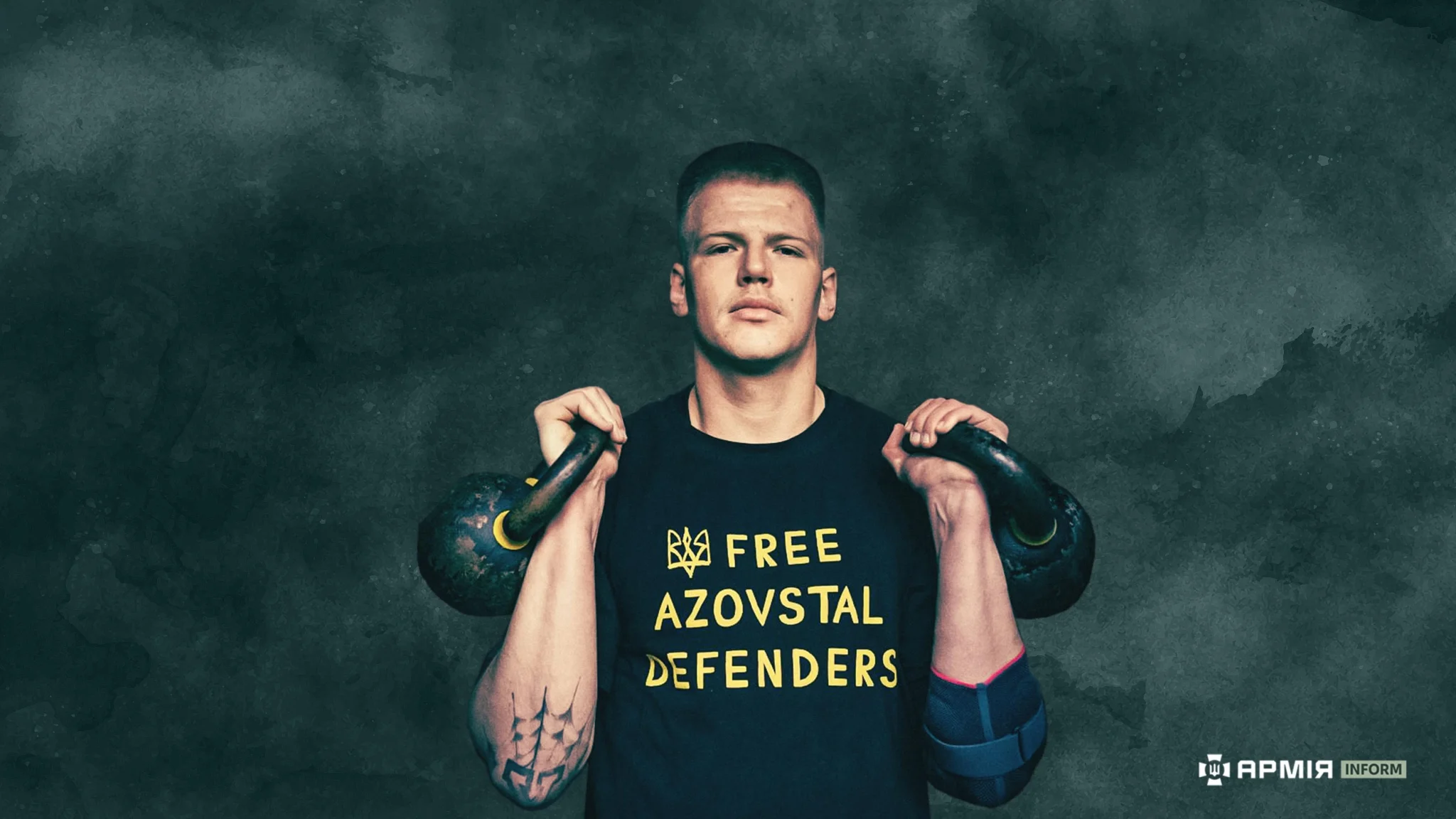
“I have an anniversary tomorrow”, — says Azov fighter Rusty. “My release from captivity. It’ll be exactly a year”.
We spoke on 17 October 2025. On 18 October 2024, a prisoner exchange took place between Ukraine and the Russian Federation, as a result of which 95 Ukrainian servicemen who had received “sentences” in Russia returned home.
Rusty was among them. He is 26 years old, and two and a half of those years he spent in captivity. First four months in Olenivka, then a year in Taganrog, then a few more months in the Donetsk pretrial detention center, and afterward Makiivka in the occupied Donetsk region — until his return to Ukraine.
After rehabilitation he returned to service. A junior sergeant in the special reconnaissance detachment of the 12th Special Forces Brigade “Azov.” He trains regularly — and emphasizes that sports played a crucial role during his rehabilitation.
“I had 12–13 training sessions a week — running, CrossFit, swimming. It helped me relax. It was important to do what I wanted”, — the serviceman notes.
He shared with ArmyInform correspondent the story of joining Azov in 2020, the fighting for Mariupol, captivity and torture, the fabricated cases created by Russian “investigators”, the “sentence” delivered in a single hearing, and… his return to the battlefield.
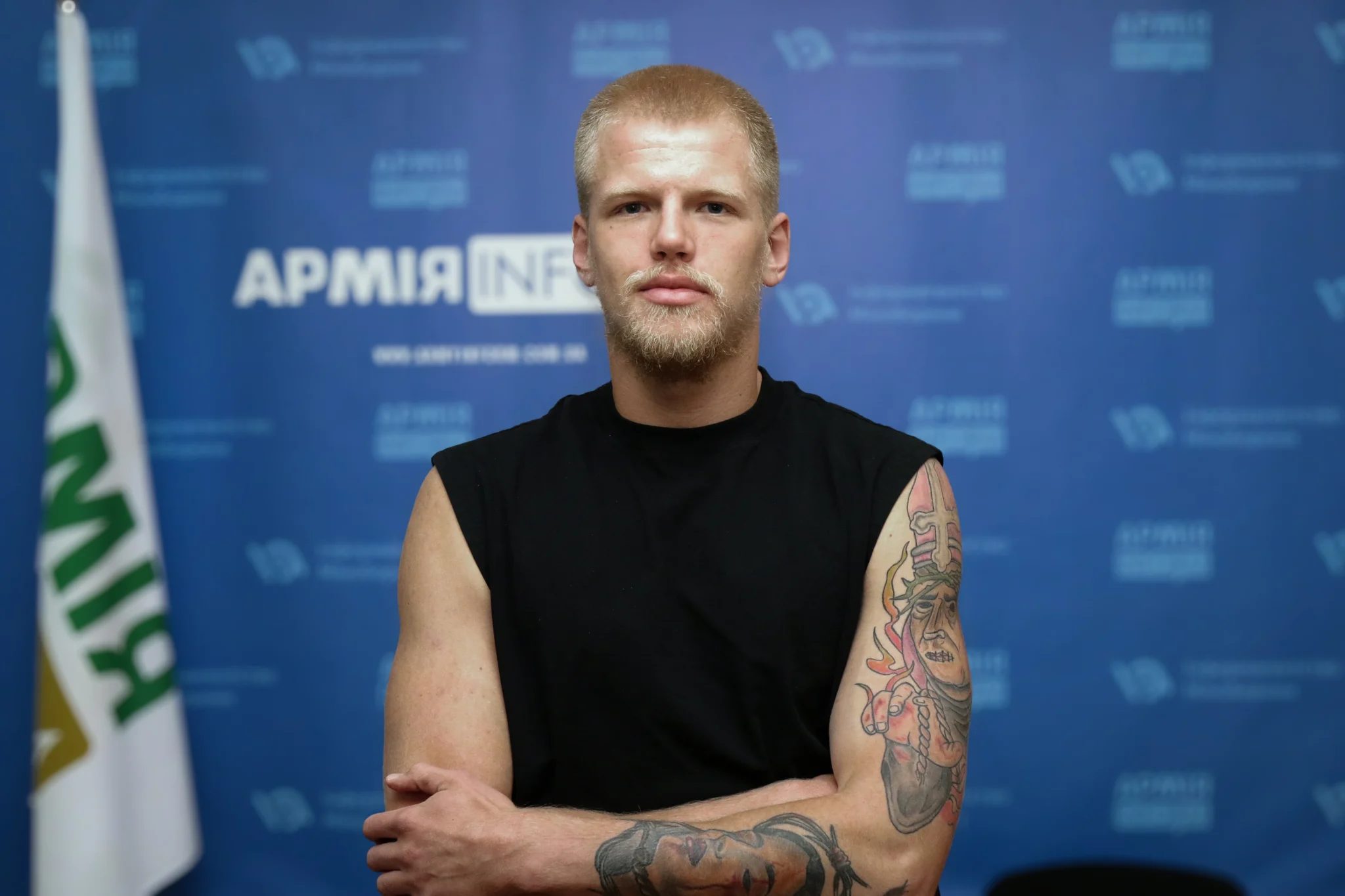
Below is his story.
“I’m from Kyiv. I studied in college — but I didn’t finish last year and joined Azov in 2020. Why Azov?.. I wanted to fight. Not in the Armed Forces of Ukraine — because what did people say about them at the time? And I wasn’t going to the army for money, but for my beliefs and ideas; I understood that I needed to prepare… That’s how I ended up in a reconnaissance group.
We worked in Shyrokyne, Vodiane, Pavlopil. Was reconnaissance difficult during the JFO period?.. Back then there were no large-scale special operations; we were stationed on positions. I worked as the spotter for a sniper: observation (including for artillery), identifying and eliminating the enemy — those were our tasks. In short, we did everything reconnaissance units are supposed to do.
On 24 February 2022, I was at the Azov base in Yuriivka, 30 km from Mariupol. Two weeks before the full-scale invasion we were warned that “something might happen”. A few days later they told us to move from the base to Mariupol.
In the first days of the full-scale invasion things around Mariupol started stirring, Russians moved in from Crimea. But already on 1 or 2 March the city was completely encircled.
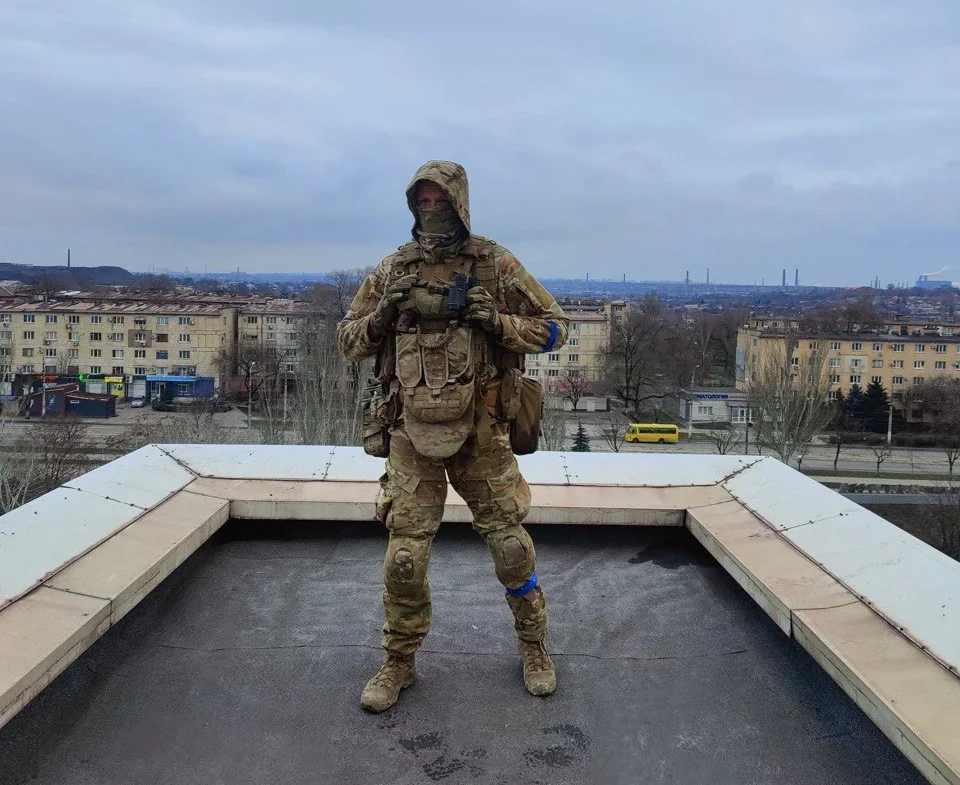
My comrades and I worked as a mobile group: every day we changed positions, from 5 to 15. For example, a tank breakthrough at 5 a.m. — we’d go there; an ambush or raid was needed — we were already moving again. At the beginning of the war in Mariupol everyone was a universal soldier. Even artillerymen, who eventually ran out of shells, became infantry.

Our group was armed with a standard set: machine guns, rifles, carbines, etc… Mostly light weapons. For anti-tank — RPGs. Helicopters delivered us Javelins and NLAWs, and they helped somewhat”.
“What is the significance of the Mariupol garrison’s fight in this war and in history in general?.. I see it from two sides. Yes, if there had been an opportunity to leave the city in advance to prevent civilian casualties — we could’ve done that.
But on the other hand, by holding the defense of Mariupol, we tied down a large number of enemy forces. Half of the column moving from Crimea went to us instead of Kherson or Kyiv… When the Russians realized that Kyiv was beyond their capacity, they redirected massive amounts of equipment and weapons to us to crush Mariupol.
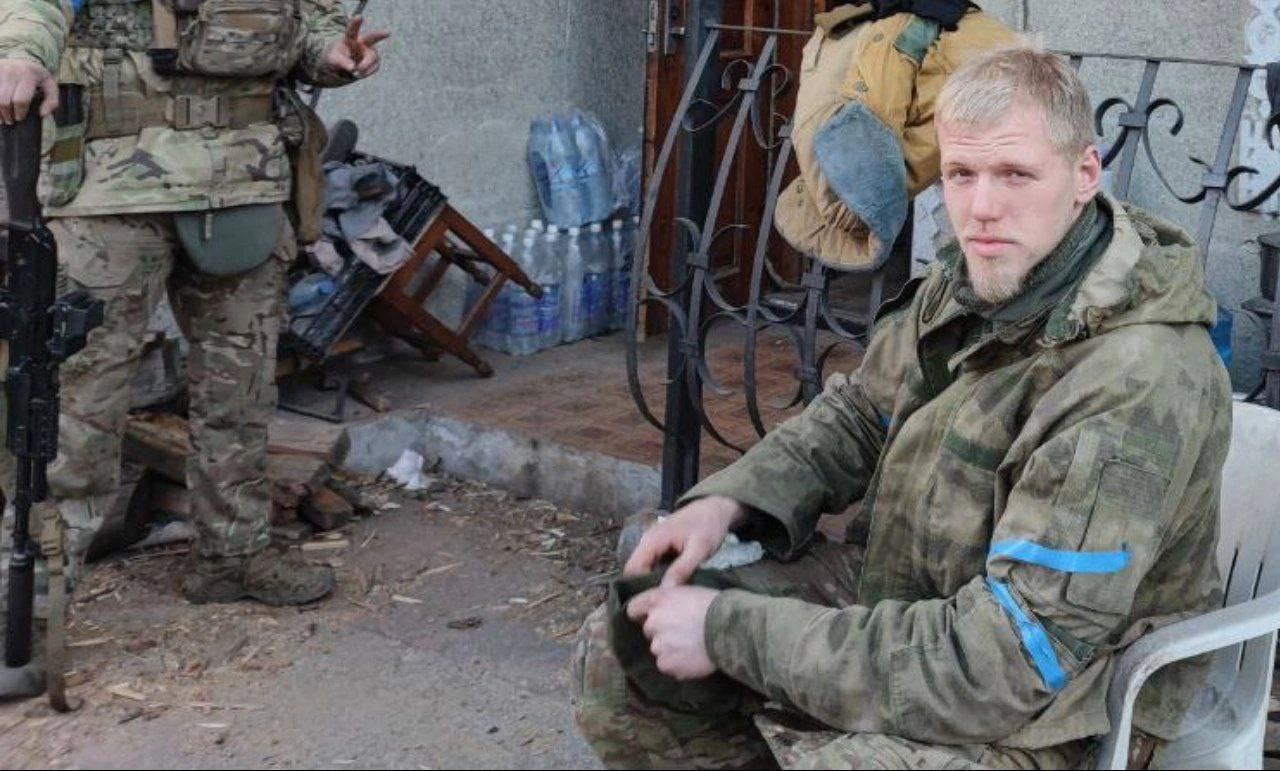
And in the last days of the Azovstal defense, there were cases when Russian strategic aviation carried out 110 sorties on the plant alone. Meaning several “Tushkas” (Tu-series bombers) would take off and bomb only the plant. But all those aircraft bombing us could’ve bombed Kyiv or other cities. So I believe the defense of Mariupol played one of the key roles in drawing enemy forces away from Sumy, Chernihiv, Kyiv… For context: one such aircraft can carry ten 500-kg FAB glide bombs… Just multiply. All those kilotons of explosives could’ve been dropped on other cities, but were dropped on us.”
“Naval artillery was also working actively — they brought ships close to the shore, knowing no one could do anything to them. Through optics I could see people on deck.
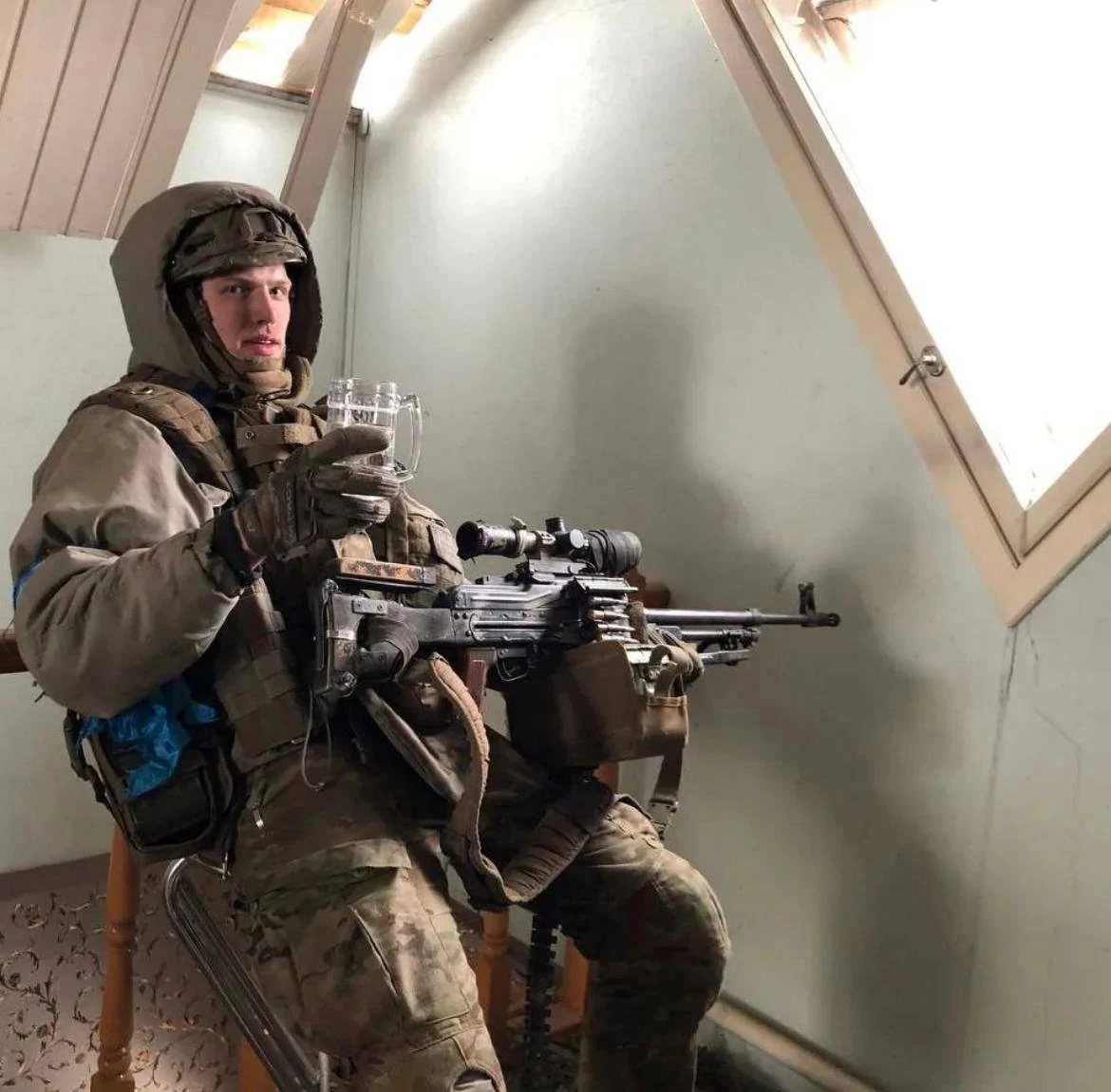
Missiles flew — and we couldn’t do anything about it. Russians had about a hundred tanks during the battle for Mariupol; we had ten operable units for the entire garrison”.
“After I was captured, for a year I was held in a cell with the same people — and I was the only one tortured, quite harshly. They pinned many cases on me. There were 24 cells on one floor — and I was the only one they tormented so intensely.
While working in Mariupol our unit was called “Mariupol Leopards” — we drove all over the city, helped the Marines, the Territorial Defense, the AFU, the National Guard… And when many of them were later captured, under pressure they could tell “investigators” anything just so they’d stop torturing them. Some banal “reconnaissance guys from Azov came and fired” could later, in captivity, work against me. And that’s what happened. Depending on the investigator or operative, they tortured that “reconnaissance guy”. Once my interrogation lasted 12 hours”.

He describes differences between places, Taganrog versus Donetsk, how fabricated accusations of killing civilians were forced onto him, and how Russian investigators sought “scapegoats” to earn bonuses and promotions.
He recounts an FSB officer kicking him, injuring his own finger, Russians cursing as they struck his emaciated body (“I weighed about 50 kg, before the invasion I weighed 85…”).
Russians wanted him to confess to killing civilians. After a 12-hour interrogation and an epileptic seizure, he signed fabricated confessions.
Then they threatened: “Either you take on the case yourself, or we’ll hang worse on you. Rape, for example. And in Russian prisons sitting with that is very bad”.. He had to “recall” and invent things for them.
“Then there was a one-hearing trial and a sentence — 29 years. My ~70-year-old ‘lawyer’ chatted with his wife on Viber during the hearing, and at the end asked the court to note my ‘sincere confessions’… I was supposed to get 48 years — but they gave 29”.
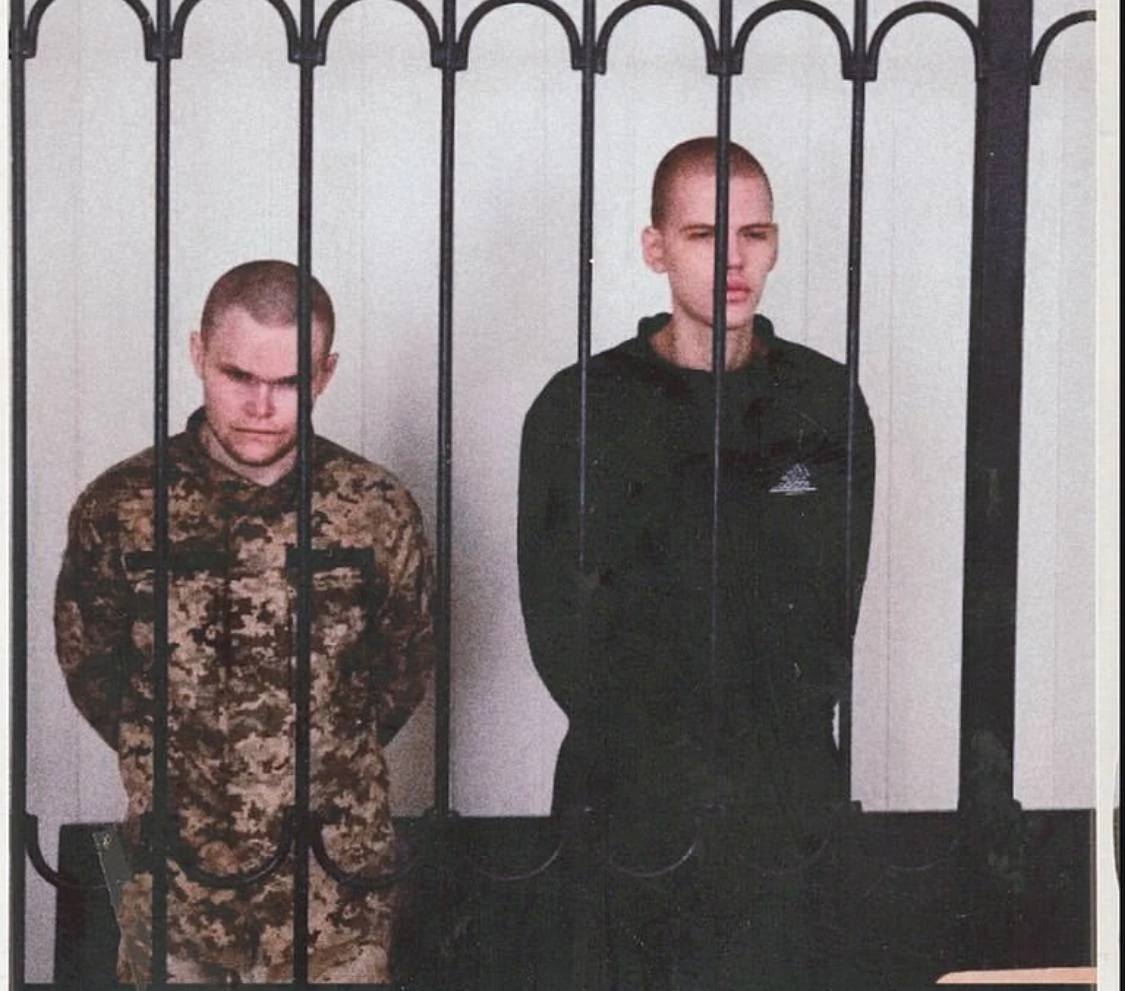
What kept him going? “Different things. Sometimes — the basic instinct to survive, sometimes — the desire for revenge. I wanted to return to service. I said this during interrogations too — and they beat me for those words”.
He describes how on 4 September 2024 Russians gathered several prisoners and asked whether they wanted an exchange. No one believed it. On 7 September he was called for personal data verification; he ignored hints from others, thinking it was nonsense. Only later he realized he had been included in the lists.
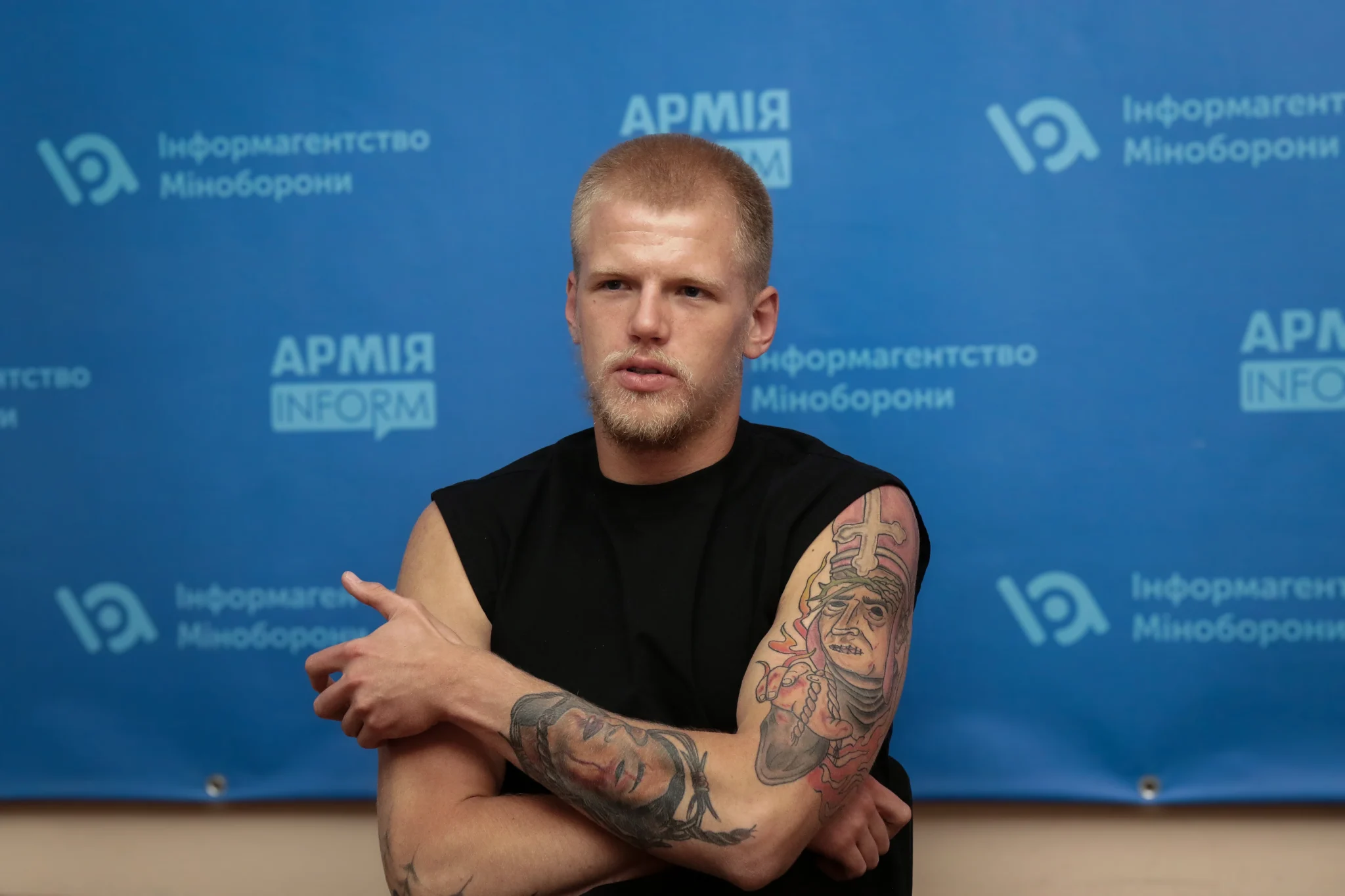
They were warned not to write to relatives about it. He stood in a stupor thinking: “For real?”
Days passed without updates; then they saw news of an exchange on Russian TV and feared they had been removed from the list. Hope remained.
On 16 October they were examined for bruises. On 17 October they were taken away in prison vans. They signed papers stating they had “no complaints about their treatment”.
They describe being moved, then flown from Rostov — Rusty had never flown before; they joked about the earlier Russian plane shot down in February 2024 with POWs on board. They waited 12 hours for a permitted flight window.
He notes an observation: “Those Russians who tortured us were not connected to the war. Those whom the war hadn’t touched. But Russian military treated POWs normally. The farther a person is from the front, the more patriotic they are…”
At the Belarus–Ukraine border, Belarusian security officers in plaid shirts handed them packages: “This is from President Lukashenko, congratulations on your exchange, don’t get captured again”. Inside: two boiled potatoes in skins, a sandwich, a tomato, a cucumber, water, juice, cookies.
When we arrived on Ukrainian territory, our Security Service guys (SBU) boarded, greeted us with “Glory to Ukraine!”, and we replied “Glory to the Heroes!”. And there was a question about what we should do with those packages.
And since Russians — the ones we were exchanged for — were supposed to take our seats in the same buses, one SBU officer said to leave those packages for them — let the Russians eat the Belarusian “gifts” themselves.
After being released from captivity, by the way, I had no desire at all to eat everything in sight. But I remember the first thing I ate at a restaurant: I don’t remember the name of the dish, but it was cabbage that was moving (laughs). I cracked up: I came to a café after 2.5 years in captivity — and here’s cabbage that moves (laughs).
After returning from captivity, I started doing what I love — running 10–15 kilometers.
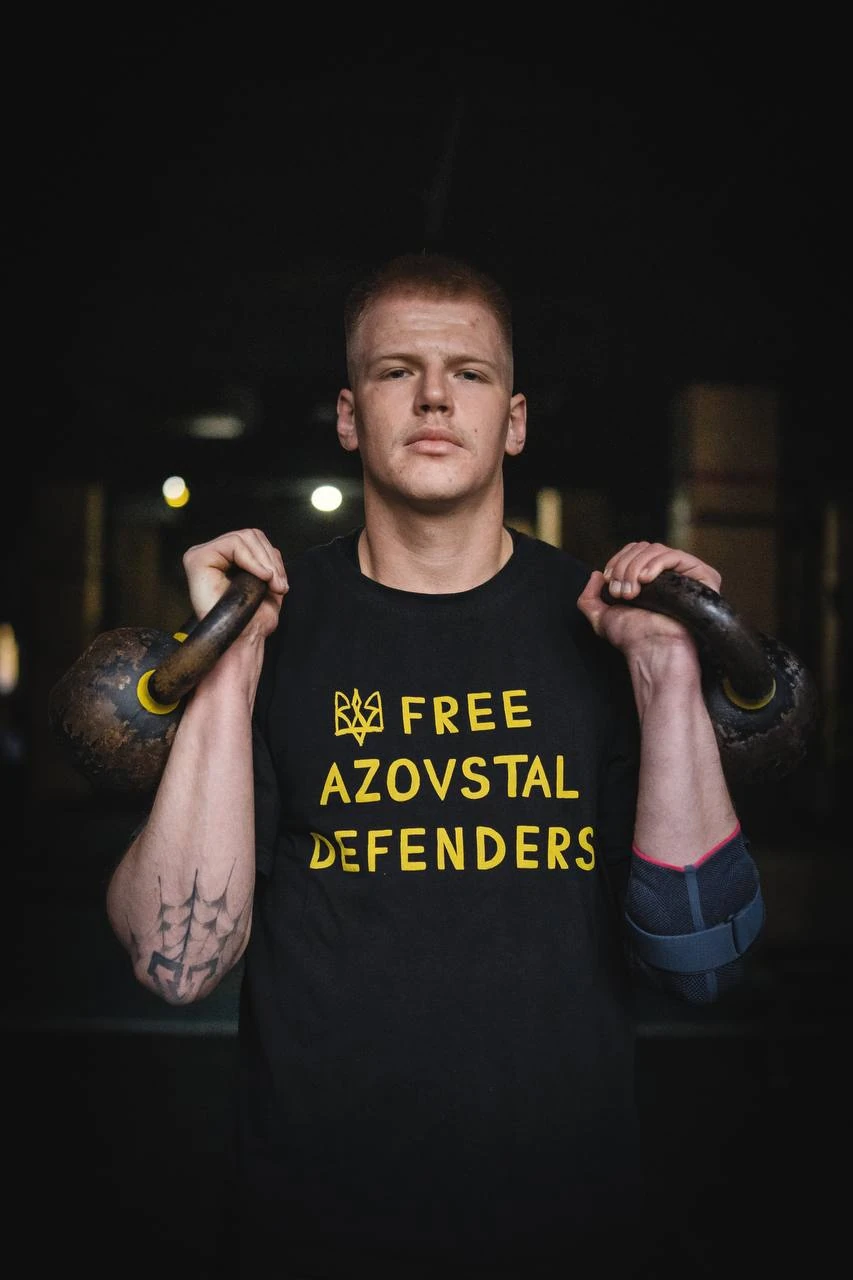
In the Makiivka prison colony, during morning physical training we had time — I also did some sports, about 20 minutes in the morning… We were allowed to walk in circles — so I also walked laps. In the colony I actually gained weight normally; the food was relatively normal: three times better than in Taganrog, for example.
Psychological rehabilitation for those who return from captivity, I believe, should be rehabilitation without restrictions. I, for example, was supposed to stay in a facility during rehab. And what does that mean — from one prison to another prison?.. I explained to people that restrictions on movement, on freedom — that was my condition in captivity… So I tried to resolve this somehow and spent the time I had lost in captivity the way I wanted.
After returning I actively did sports: I had 12–13 training sessions a week — running, CrossFit, swimming. It helped me. It was important to do what I wanted.
After the exchange I told my commander that in two weeks I would be ready to return to duty. But about half a hundred people told me that I should rest at least half a year, because I had earned that rest. And that there would be enough war for everyone. But I lived with this goal: to return to service and take revenge.
I returned to duty in Azov’s reconnaissance detachment, on the Toretsk axis. I went on missions; I could have died about five times already; enemy FPV drones attacked my basement… I evacuated the wounded, I killed the enemy, and engaged in close combat more than once…
The battlefield has become incomparable to, say, 2022. For example, the same FPV drones: at first the unfamiliar buzzing in the sky made me uncomfortable — I didn’t know what it was like to “meet” an FPV drone… But then you adapt and understand how to deal with it.
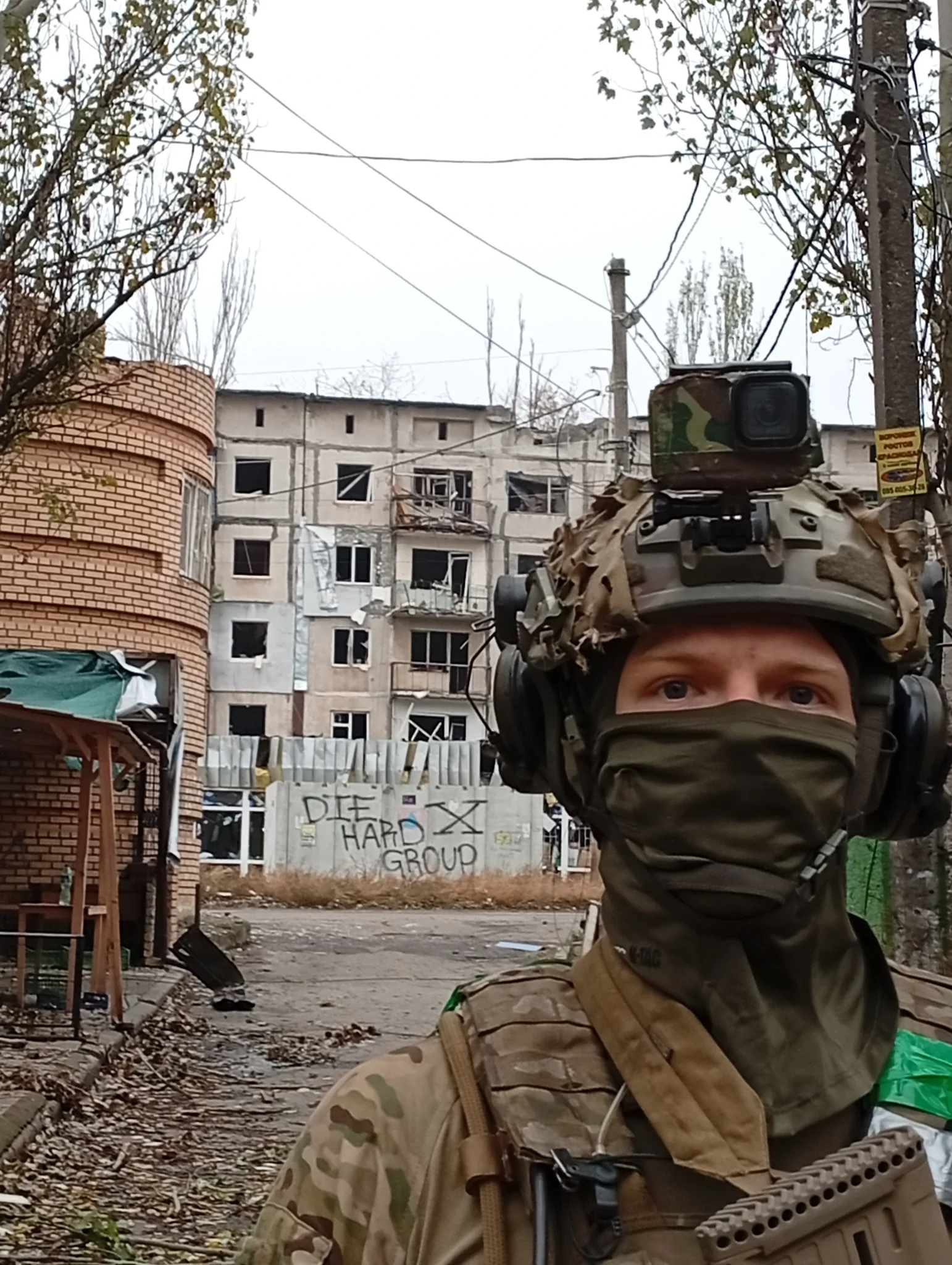
On the most recent mission I was given 8 people under my command. I was thrilled by the result: no losses, no wounded, and the commanders praised us. It feels good.
Now I have my own group, which I train separately in the reconnaissance detachment — these are newcomers to the military.
What will the end of the war be for me?.. Maybe we can gain some advantages on the battlefield thanks to special operations like “Spiderweb” or the Kursk operation… But these are very complex operations. If not for Kursk — I wouldn’t have been exchanged. Because they exchanged me for the prisoners our Defence Forces captured during the operation in the Kursk region. Although many of our guys died during that operation — so I also have certain uncomfortable feelings about it.
As for the future?.. If Europe gets dragged into it as well — then things will become somewhat more interesting (smiles).
What is my endurance reserve in this war?.. Long (smiles). After everything I’ve been through… (pauses). I’ll say this: my reserve lasts until my death.
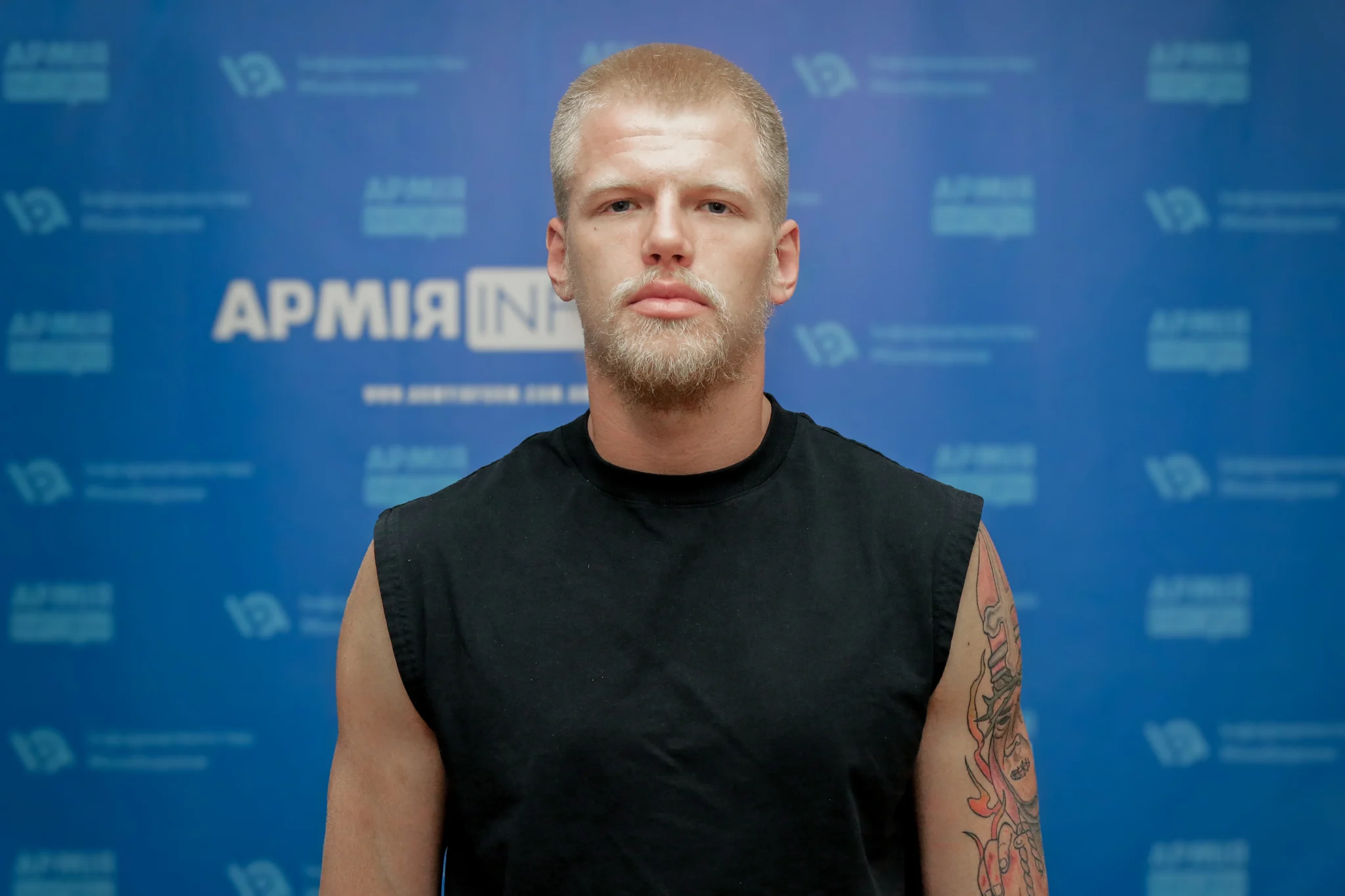
A dream? For the war to end so I can simply travel, to let all this go… I fulfilled one of my dreams during this leave — I visited Madeira. But the main dream is Iceland.
Photos from Rusty’s personal archive and by Ruslan Tarasov.
@armyinformcomua

Deputy Minister of Defense of Ukraine Hanna Hvozdiyar held a meeting with the International Monetary Fund mission led by Gavin Gray.
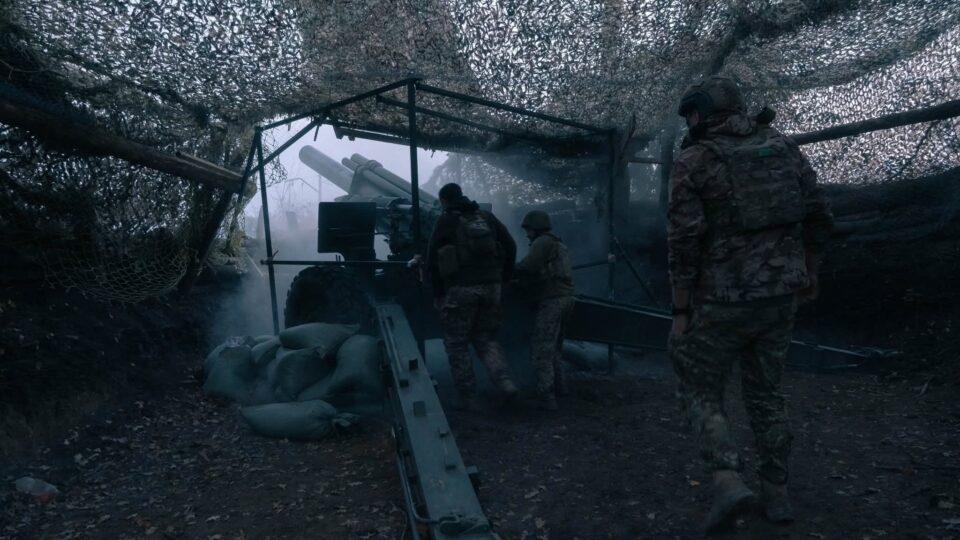
Over the past 24 hours Ukrainian forces carried out strikes on two enemy concentration areas.

The Defence Forces are holding back the enemy and conducting search-and-strike actions to eliminate Russian troops in Pokrovsk. Ukrainian positions remain in the city centre, small-arms battles continue, and the enemy is unable to gain a foothold.

Losses of Russian artillery systems in the first 11 months of the current year have already surpassed last year’s figures.

Over the past day, Russian invaders lost 1,190 troops killed and wounded, as well as 564 units of military equipment.

The evolution of military technologies is moving at the speed of light, and today’s soldier on the battlefield is no longer just an infantryman.
At the moment, the Non-Commissioned Officer Corps of the Armed Forces of Ukraine — which includes more than 250,000 sergeants…